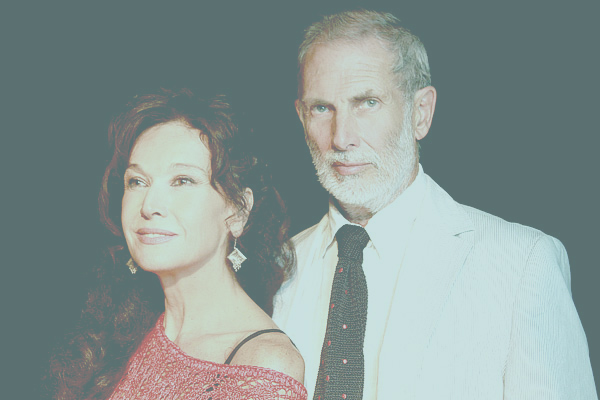

LOVE LETTERS
Héctor Noguera directs and stars in the successful PULITZER-nominated play.
Actors such as Elizabeth Taylor and Paul Newman have previously starred in the play, written in 1989. Performing with Shlomit Baytelman, the actor will debut Love letters tomorrow at the LADRÓN DE BICICLETAS hall.
TEXT POWER
On December 1st, 2007 after 24 years of being absence, Elizabeth Taylor returned to the stage. It was not an ordinary return. Despite being wheelchair-bound, the actress, by then 75 years old, arrived wrapped in fur at the Paramount Theater in Hollywood to perform, with actor James Earl Jones, A.R. Gurney's acclaimed text, Love letters. She wanted to raise one million dollars for her AIDS foundation. It was a success. Not only because she successfully raised the funds, but also because the actress overcame expectations by a masterfully performance as a woman who has been in love by correspondence for decades.
Even A.R. Gurney, seated in the audience, was elated: "I feel an extra shudder to see Elizabeth Taylor's beauty and talent in a role I dreamed of many times for her." Premiering in the U.S. in 1989, the play was nominated for a Pulitzer Prize and has since been adapted in countless theatrical versions, some of them performed by actors such as Paul Newman, Charlton Heston, Sissy Spaceck, William Hurt, Sigourney Weaver and Alain Delon.
Tomorrow, Love letters will debut in a new version, at 9.30 p.m., directed and starring Héctor Noguera at ‘El Ladrón de bicicletas’ hall, with the actress Shlomit Baytelman. "The idea came from the Argentine producer Miguel Schapira," says Noguera, "The format of the play is very simple”, it is a letter reading of two people who have been writing to each other all their lives, and only meet temporarily at the end of their lives to reminisce about their correspondence. All the wealth of the work relies on the power of the words.
‘Text Power’ Called by The New York Times as ‘theater at its purest state’. One of the best contemporary plays, ‘Love letters’ shows Andrew, an ambitious lawyer, and Melissa, a wildly rebellious actress, who for 50 years have been engaged in an epistolary relationship.
Once in the maturity of their lives, they meet to review their story. "Both get married, have children, get separated, have problems of all kinds such as alcoholism and drugs, but they keep a center, the letters. The most important relationship in their lives is the epistolary one. Everything changes, but they keep that bond," the director adds. Sitting in front of a table without many tools except their own interpretation, the actors read the letters and shape their characters. That is how simple A.R. Gurney conceived it, who some time ago defined the keys to Love letters: "It is a kind of game, which almost doesn't need theater. Just an actress and an actor of about the same age reading side by side. Not much rehearsal, no special set design, no memorization of lines or engagement of the actors beyond the night of the staging." For Baytelman, the proposal, though simple, has been a challenge. "It's very different from what an actor always does. Because it is not about standing up and reading, it is about getting involved in the character and exploring yourself as a person. For this reason the text is so smart, because it is able, through details, to build the whole context and summarize in less than two hours the happiness, sadness, ironies and displeasures of two opposite lives that have gone in parallel", says the actress.


